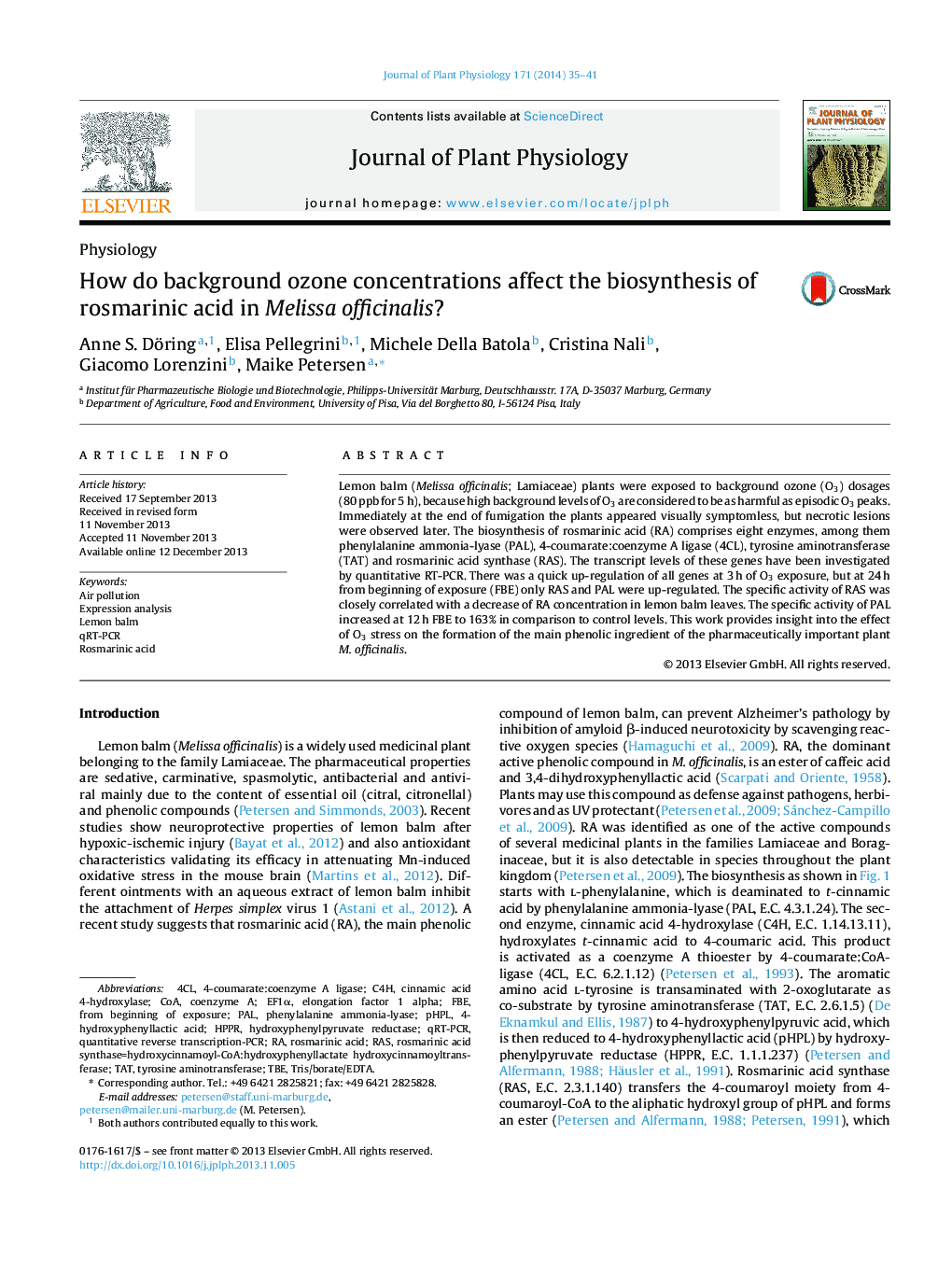| Article ID | Journal | Published Year | Pages | File Type |
|---|---|---|---|---|
| 10876889 | Journal of Plant Physiology | 2014 | 7 Pages |
Abstract
Lemon balm (Melissa officinalis; Lamiaceae) plants were exposed to background ozone (O3) dosages (80Â ppb for 5Â h), because high background levels of O3 are considered to be as harmful as episodic O3 peaks. Immediately at the end of fumigation the plants appeared visually symptomless, but necrotic lesions were observed later. The biosynthesis of rosmarinic acid (RA) comprises eight enzymes, among them phenylalanine ammonia-lyase (PAL), 4-coumarate:coenzyme A ligase (4CL), tyrosine aminotransferase (TAT) and rosmarinic acid synthase (RAS). The transcript levels of these genes have been investigated by quantitative RT-PCR. There was a quick up-regulation of all genes at 3Â h of O3 exposure, but at 24Â h from beginning of exposure (FBE) only RAS and PAL were up-regulated. The specific activity of RAS was closely correlated with a decrease of RA concentration in lemon balm leaves. The specific activity of PAL increased at 12Â h FBE to 163% in comparison to control levels. This work provides insight into the effect of O3 stress on the formation of the main phenolic ingredient of the pharmaceutically important plant M. officinalis.
Keywords
Related Topics
Life Sciences
Agricultural and Biological Sciences
Agronomy and Crop Science
Authors
Anne S. Döring, Elisa Pellegrini, Michele Della Batola, Cristina Nali, Giacomo Lorenzini, Maike Petersen,
